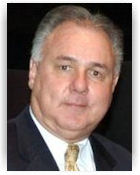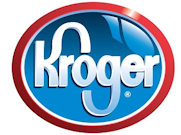
When
Dennis Dansak first joined The Kroger Co. six years ago as its Senior Corporate
Manager of the Organized Retail Crime unit, it consisted of two other ORC
investigators. Today, that unit is comprised of professional ORC investigators
in most metropolitan areas in the country. Prior to joining Kroger, Dansak was a
Supervisory Special Agent supervising multi-jurisdictional and multi-state task
forces working with the FBI, DEA and local law enforcement agencies focused on
organized crime, counter-terrorism and narcotics. After 28 years, he was looking
for a new challenge. That is when he was approached by The Kroger Co. to help
address their growing problem with Organized Retail Crime. Given Kroger’s
impressive footprint and diverse product offerings, this was an exceptional
challenge.

Kroger,
based in Cincinnati, Ohio, is one of the world’s largest grocery retailers, with
fiscal 2014 sales of $108.5 billion dollars. Its family of stores spans 34
states with store formats that include grocery and multi-department stores,
discount, convenience and jewelry stores. The company operates 2,626 grocery
stores, 780 convenience stores, 327 jewelry stores and 37 food processing or
manufacturing facilities. It also operates 2,117 pharmacies which are located in
its combination food and drug stores.
“When Karl Langhorst first approached me about the position, I was impressed
this organization was very dedicated in building a unit that could address
Organized Retail Crime in their stores and reduce shrink,” said Dansak. “From
our first meeting it was clear that Karl, with his law enforcement background,
understood the problem and was willing to give me the latitude and support that
was needed to develop a comprehensive approach for dealing with ORC.”
Dansak’s started by hiring and training new members for the unit. Since ORC
investigations would result in criminal cases and are criminal investigations,
Dansak believed strongly that a solid background in identifying, investigating
and building cases were keys to being successful. He typically looks for
individuals that possess the skill set of law enforcement investigators with
experience in money laundering, narcotics and handling confidential informants
since ORC is rooted in drug use or money laundering to support illicit
activities. Over the years, he has found that 93% of the boosters used in ORC
cases are drug users with many of them holding no other jobs.
Dansak has a clearly defined description of what accounts for an Organized
Retail Crime. “We are not looking for the individual who comes into our stores
to steal as a crime of opportunity,” he states. “ORC constitutes stealing a
large quantity of a single or multiple categories or sweeping a shelf by a
booster for later re-sale to a fence for pennies on the dollar.”
Working closely with the Loss Prevention organization, the ORC unit is focused
on ultimately identifying and prosecuting the fence of the operation as well as
the booster. When the booster is apprehend by a LP agent, the ORC team will work
to “flip” the booster to help initiate an investigation targeting the fence or
fences. Dansak has found a great deal of success working with law enforcement in
conducting reverse buys, where Kroger provides merchandise to the booster who
then sells it to the fence as stolen merchandise to help make the arrest. All
investigations are worked in conjunction with law enforcement.
Over the past six years, Kroger has initiated in excess of 2,000 ORC
investigations targeting fencing operations, resulting in excess of 2,100
arrests and convictions. The ORC unit has recovered millions of dollars’ worth
of stolen products through their effort. Kroger often partner with other
retailers.
With Organized Retail Crimes on the rise, Dansak’ s recommendations for
combating ORC are:
“One of the most important things we can do is to establish deep relationships
with our local law enforcement agencies. A study conducted by the Loss
Prevention Retail Council found that one of the most frustrating factors for
retailers in dealing with ORC investigations was getting law enforcement
involved in the case,” stated Dansak. “If your local jurisdiction has an ORC
association, go to the meetings, cultivate those relationships with not only the
officers but with other retailers in your area. All of us are victims of this
crime.”
Dansak also advocates the passing of federal legislation to address ORC. Today,
there are approximately 34 separate ORC associations across the country. With
this crime increasingly crossing state lines and even going overseas, federal
laws are needed to address ORC.
Dansak also spends a great amount of time presenting ORC education to law
enforcement agencies and prosecutors at conferences since most of the agencies
equate ORC with shoplifting. Dansak also designs courses for Kroger’s more than
500,000 employees so they better understand and recognize this type of crime.
“The biggest deterrent we have to combat these crimes is our employees,” he
says.” A booster is more likely to leave the store before committing the crime
if he is approached by an associate offering assistance. At the end of the day,
our mission at Kroger is to provide our customers with low prices, ensure that
the merchandise the customer wants is on the shelf and provide a safe and
pleasant shopping experience.”
Click here to go back to the Daily